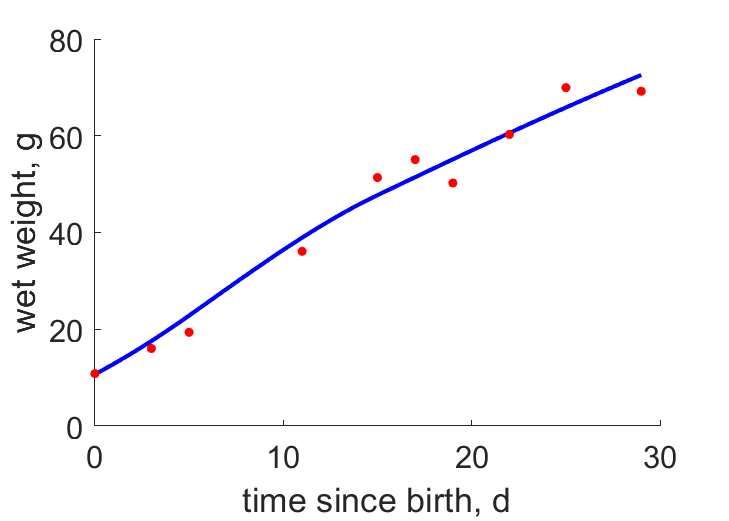Predictions & Data for this entry
| Model: std | climate: Cfa, Dfa, Dfb | migrate: | phylum: |
| COMPLETE = 2.5 | ecozone: TN | food: biHs | class: |
| MRE = 0.018 | habitat: 0iTi | gender: Dg | order: |
| SMSE = 0.001 | embryo: Tnpf | reprod: O | family: |
Zero-variate data
| Data | Observed | Predicted | (RE) | Unit | Description | Reference |
|---|---|---|---|---|---|---|
| ab | 23 | 23.58 | (0.02526) | d | age at birth | avibase |
| tx | 33 | 33.01 | (0.0002521) | d | time since birth at fledging | Snow1970 |
| tp | 99 | 97.74 | (0.01274) | d | time since birth at puberty | guess |
| tR | 912.5 | 912.5 | ( 0) | d | time since birth at 1st brood | avibase |
| am | 3650 | 3673 | (0.006304) | d | life span | guess |
| Ww0 | 17.9 | 15.04 | (0.1599) | g | initial wet weight | avibase |
| Wwb | 10.8 | 10.64 | (0.01472) | g | wet weight at birth | Snow1970 |
| Wwi | 127 | 127.4 | (0.003298) | g | ultimate wet weight for females | avibase |
| Wwim | 168 | 166.8 | (0.007107) | g | ultimate wet weight for males | avibase |
| Ri | 0.00274 | 0.00274 | (7.697e-05) | #/d | maximum reprod rate | avibase |
Uni- and bivariate data
| Data | Figure | Independent variable | Dependent variable | (RE) | Reference |
|---|---|---|---|---|---|
| tW |  | time since birth | wet weight | (0.06362) | Snow1970 |
Pseudo-data at Tref = 20°C
| Data | Generalised animal | Procnias averano | Unit | Description |
|---|---|---|---|---|
| v | 0.02 | 0.03124 | cm/d | energy conductance |
| p_M | 18 | 618.2 | J/d.cm^3 | vol-spec som maint |
| k_J | 0.002 | 0.02581 | 1/d | maturity maint rate coefficient |
| k | 0.3 | 0.3056 | - | maintenance ratio |
| kap | 0.8 | 0.9607 | - | allocation fraction to soma |
| kap_G | 0.8 | 0.8001 | - | growth efficiency |
| kap_R | 0.95 | 0.95 | - | reproduction efficiency |
Discussion
- Body temperature is guessed
- Males are assumed to differ from females by {p_Am} only
- mod_1: Pseudo-data point k is used, rather than k_J; Data set tp and parameter t_R are added, the latter replacing clutch interval t_N. Postnatal T is based on PrinPres1991, see get_T_Aves. See further the revision page, theme puberty
Bibliography